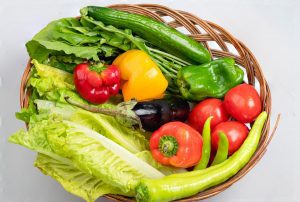Mastering the Art of Meal Prepping for a Healthy Week


Mastering the Art of Meal Prepping for a Healthy Week


Introduction
In today’s fast-paced world, it’s often challenging to find the time to prepare healthy meals on a daily basis. This is where meal prepping comes to the rescue. Meal prepping involves planning and preparing your meals in advance, usually for an entire week. It not only saves you time but also helps you make healthier choices and stick to your dietary goals. In this tutorial, we will guide you through the process of mastering the art of meal prepping for a healthy week.
Step 1: Plan Your Meals
The first step in successful meal prepping is to plan your meals for the week ahead. Consider your dietary requirements, personal preferences, and any specific goals you have in mind, such as weight loss or muscle gain. Create a menu for breakfast, lunch, dinner, and snacks, keeping in mind a balance of macronutrients (carbohydrates, proteins, and fats) and including a variety of colorful fruits and vegetables.
Step 2: Make a Grocery List
Once you have your meal plan in place, make a detailed grocery list of all the ingredients you will need. Take stock of your pantry and fridge to identify any items you already have and only purchase what you need. This will help you avoid food waste and save money. Organize your list by sections such as produce, proteins, grains, and pantry staples to make shopping more efficient.
Step 3: Grocery Shopping
Armed with your grocery list, head to the supermarket or your preferred grocery store. Stick to your list as much as possible, focusing on fresh, whole foods. Avoid processed and packaged items that are often high in unhealthy additives and preservatives. Take advantage of seasonal produce, as it tends to be more affordable and flavorful. Consider buying in bulk for items with a longer shelf life.
Step 4: Preparing Your Kitchen
Before diving into meal prepping, ensure your kitchen is well-equipped and organized. Clean and sanitize your countertops, sink, and utensils. Make sure you have enough food storage containers of various sizes to store your meals. Invest in some reusable glass or BPA-free plastic containers to minimize waste and promote sustainability.
Step 5: Batch Cooking
Batch cooking is a key aspect of meal prepping. It involves preparing larger quantities of food and dividing them into individual portions for the week. Start by cooking your proteins, such as chicken, fish, or tofu, using your preferred method – baking, grilling, or sautéing. Simultaneously, prepare a variety of grains like quinoa, brown rice, or whole wheat pasta. Roast a selection of vegetables, and don’t forget to include leafy greens for salads.
Step 6: Assembly Line Technique
To streamline the meal prepping process, utilize the assembly line technique. Lay out your food storage containers in a row and start filling them with your pre-cooked proteins, grains, and vegetables. Mix and match different combinations to keep your meals interesting throughout the week. Use dividers or compartmentalized containers to separate different components and prevent them from becoming soggy or mixed.
Step 7: Portion Control
Portion control is essential for maintaining a healthy and balanced diet. Use a food scale or measuring cups to ensure consistent portion sizes. Aim to fill one-third of your container with lean protein, one-third with complex carbohydrates, and one-third with vegetables. Avoid overfilling or underfilling the containers to maintain the right balance of nutrients.
Step 8: Storage and Labeling
Once you have assembled your meals, securely seal the containers and refrigerate them promptly. Proper storage is crucial to maintain food safety and prevent spoilage. Label each container with the date and contents to keep track of freshness and avoid confusion. Store similar items together for easy access. If you have meals that require freezing, label them accordingly and place them in the freezer.
Step 9: Grab-and-Go Snacks
In addition to your main meals, prepare some grab-and-go snacks for those moments when you need a quick energy boost. Pre-cut fruits, portioned nuts, yogurt cups, and homemade energy bars are excellent options. Keep these snacks in a separate section of your fridge or pantry for easy access.
Step 10: Enjoying Your Prepped Meals
Now that you have successfully mastered the art of meal prepping, all that’s left is to enjoy your prepped meals throughout the week. Simply grab a container from the fridge, reheat if necessary, and savor the convenience and satisfaction of having healthy, homemade meals readily available. Feel free to mix and match your components for added variety and experiment with different seasonings and sauces to keep your taste buds excited.
Conclusion
Meal prepping is a powerful tool for anyone looking to save time, make healthier choices, and stay on track with their dietary goals. By following the steps outlined in this tutorial, you can master the art of meal prepping for a healthy week. Remember to plan your meals, make a grocery list, shop mindfully, batch cook, use the assembly line technique, practice portion control, and store your meals properly. With dedication and practice, meal prepping will become a seamless part of your routine, allowing you to enjoy the benefits of a healthy and balanced diet without sacrificing time or taste.







